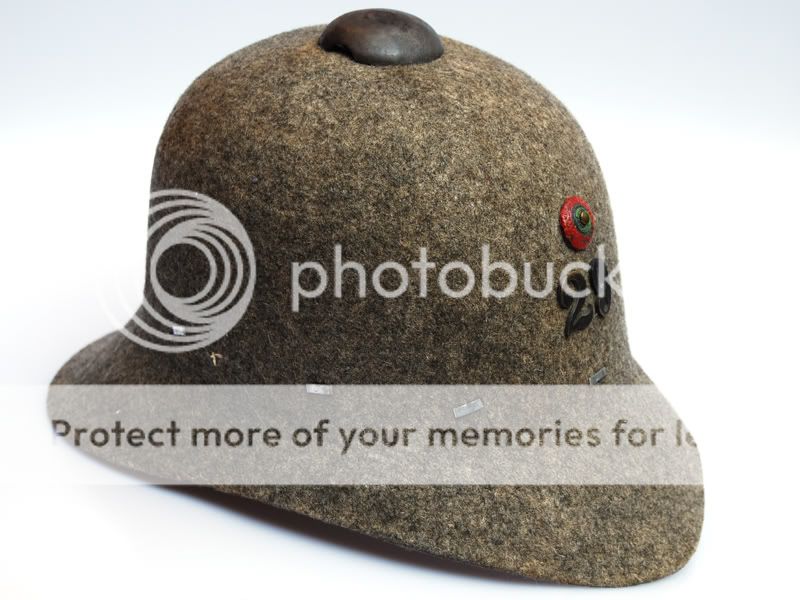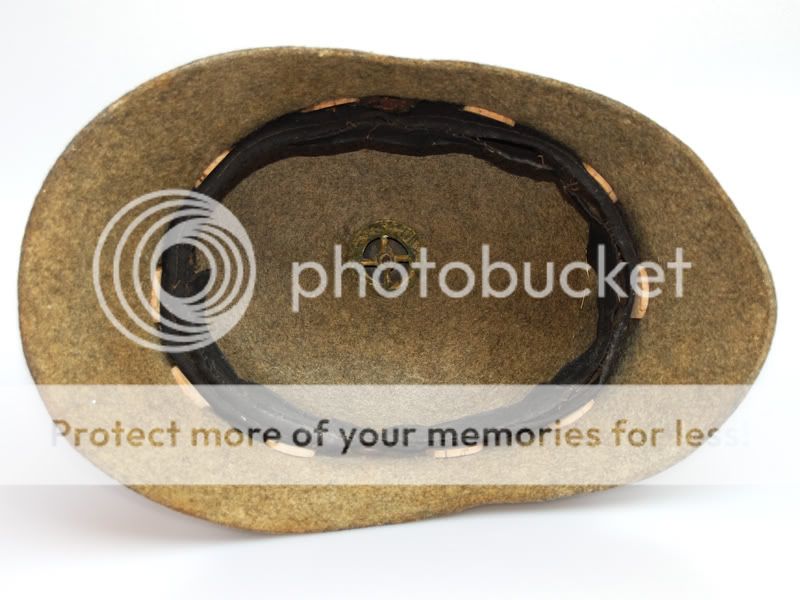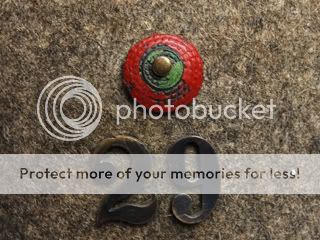Peter_Suciu
Well-known member
This is another of those ultra rare helmets. This is the FIRST Portuguese helmet I've seen in the flesh. These were meant for Europe and were sometimes worn with a stubby spike at the top.
This helmet, which is marked to the 29th infantry regiment did likely see service in Africa, where these doubled as "sun helmets." This a Metropolitan army other ranks helmet, and these had the rosette on the front along with the regimental number.
There were produced by a firm in Porto, called "Costa Brage & Fihos," and the firm logo is on the weat band. This example also bears the first model leather "rosette" on the front rather than the metal ones.



This helmet, which is marked to the 29th infantry regiment did likely see service in Africa, where these doubled as "sun helmets." This a Metropolitan army other ranks helmet, and these had the rosette on the front along with the regimental number.
There were produced by a firm in Porto, called "Costa Brage & Fihos," and the firm logo is on the weat band. This example also bears the first model leather "rosette" on the front rather than the metal ones.



